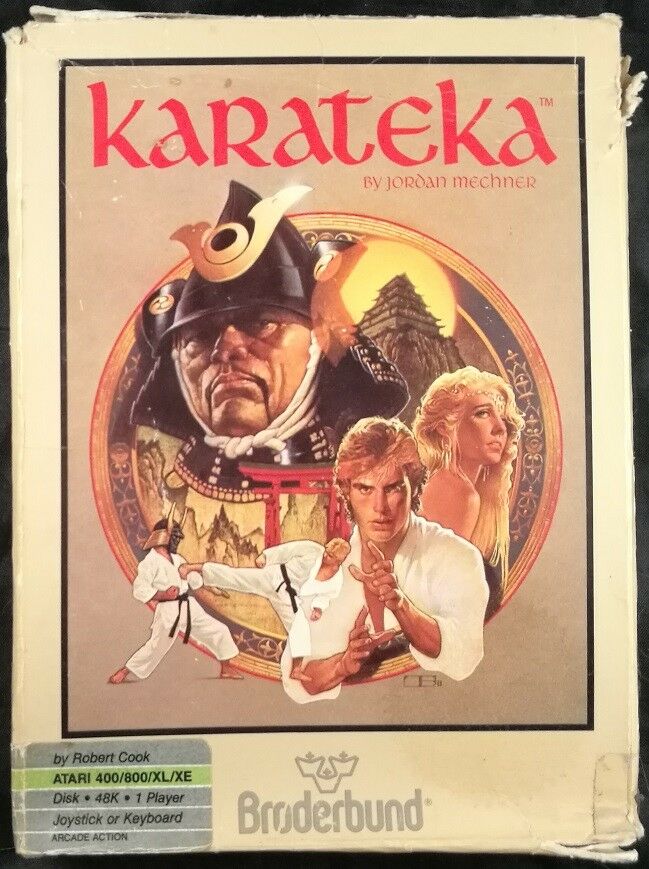The Making of Karateka (Journals 1982-1985) by Jordan Mechner


Reading a non-fiction book and knowing things about the author that haven’t happened yet is an interesting experience.
The Making of Karateka is a collection of hand-written journals captured by Jordan Mechner that span from 1982-1985. The first few entries set the scene of Mechner’s life. In the beginning of the journal, Mechner is a 17-year-old Yale freshman with many interests. He loves music and films, but has also been busy programming games on his Apple II computer. Mechner has been shopping around his first game (an Asteroids clone) to publishers without much success, and has placed all his hopes on a new game he’s developing called Deathbounce, which is an Asteroids-like game with some original twists.
As the journal moves through Mechner’s freshman year we read about the typical struggles of a college freshman. Sometimes he focuses on his programming, sometimes he dreams of becoming a novelist or screenwriter, and often, he sleeps through his classes and wonders how he’ll pull out passing grades. During these entries, Mechner works out what he believes are the principles of fun games, and continues to inspire himself. He finds a little success with some of his programs, but not the huge success he dreams of.
As Mechner pours more and more time into Deathbounce, constantly chasing other people’s suggestions, he sets his sights on a new game, one that will contain portions of all his interests. It’ll be cinematic like a movie, contain a cinematic soundtrack, and be based around the karate lessons he is currently enrolled in. This game will be called… BLACK BELT. (He changed it to Karateka pretty early on.)
To make the characters in his game move as humanlike as possible, Mechner employs the technique of rotoscoping. Using an 8mm camera, he films his karate instructor in his backyard, running around, bowing, and throwing kicks. After the film was developed, he shines the frames onto his computer’s monitor and painstakingly traces them, pixel by pixel. The end result is some of the smoothest animation ever seen in a game at that time, a process he would repeat on his next game, Prince of Persia.
By the time Mechner has drawn a couple of graphics and and added animation, he is already dreaming of becoming a millionaire. After Deathbounce was rejected by Broderbund, the young programmer sets out to set the world on fire with his new game. At least half the journal consists of Mechner showing the game to friends, family, people’s girlfriends, and just about anyone else who will look at it, and getting their feedback.
The journal goes through cycles. Mechner will work on Karateka for twelve hours a day weeks at a time, and then get caught up on his college and film studies. This continues until Mechner submits a working demo of the game to Broderbund in the spring of 1984, which turns into an offer for him to fly to California and crash in the company president’s house while he works and codes there.
As a long time player of Karateka, I enjoyed all the notes about ideas that didn’t make it into the game. Apparently the karate master was supposed to be accompanied by an animated jaguar that, for memory restrictions, didn’t make it into the final version. The addition of the evil bird that attacks you was a suggestion by his father. Another friend suggested he add a radar at the top that showed where enemies were. The radar was added early on, and removed at the 11th hour.
Mechner’s dreams of becoming a millionaire are dashed as the bottom begins to drop out of the market, and he is told to tamper his expectations (he set out to beat Choplifter and Lode Runner’s sales, two of Broderbund’s best selling games). When the game is released in November of 1984, there is only one recorded sale. But there are more in December, and more in January, and by the time the Commodore 64 port was released, sales continue to climb. Mechner does the math and figures at this rate he’ll make $30k a year off the game. Then, $50k. As the game becomes the #1 selling game, the number goes up. And… that’s where the journal ends, with Mechner (at least temporarily) on top of the world. His second set of journals cover the development and release of his next game, Prince of Persia.
I can only recommend this to fans of Karateka. People who have played and love the game may find the development interesting, but it probably won’t win anyone over who isn’t already interested in Mechner or Karateka.
About the author: Flack is an author, blogger and podcaster. Check out his home page here at robohara.com and his new Twitch.tv channel here.
Comments? Join us on the forum.
![]() Flack
Flack





